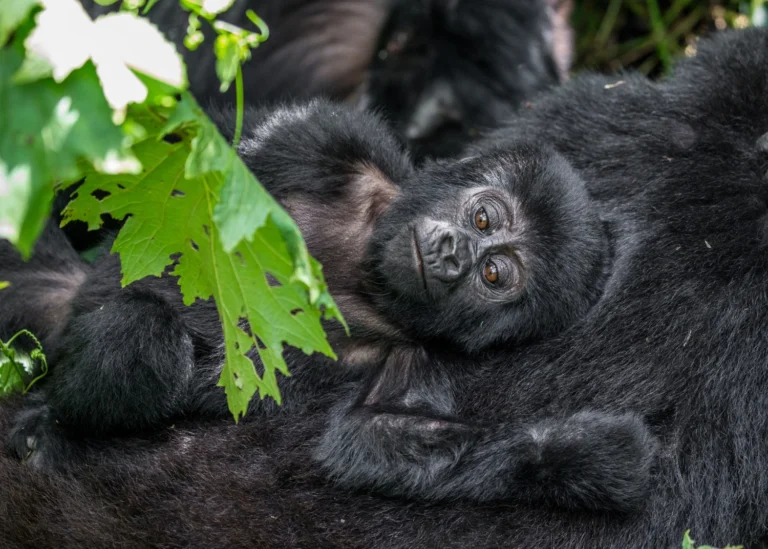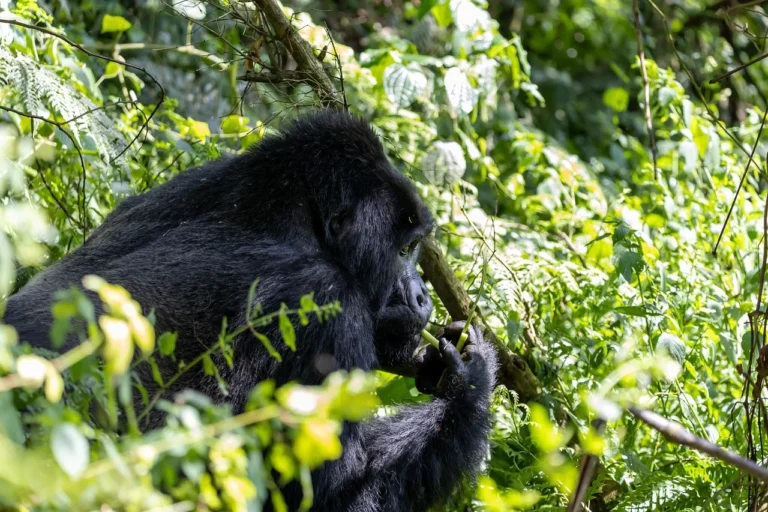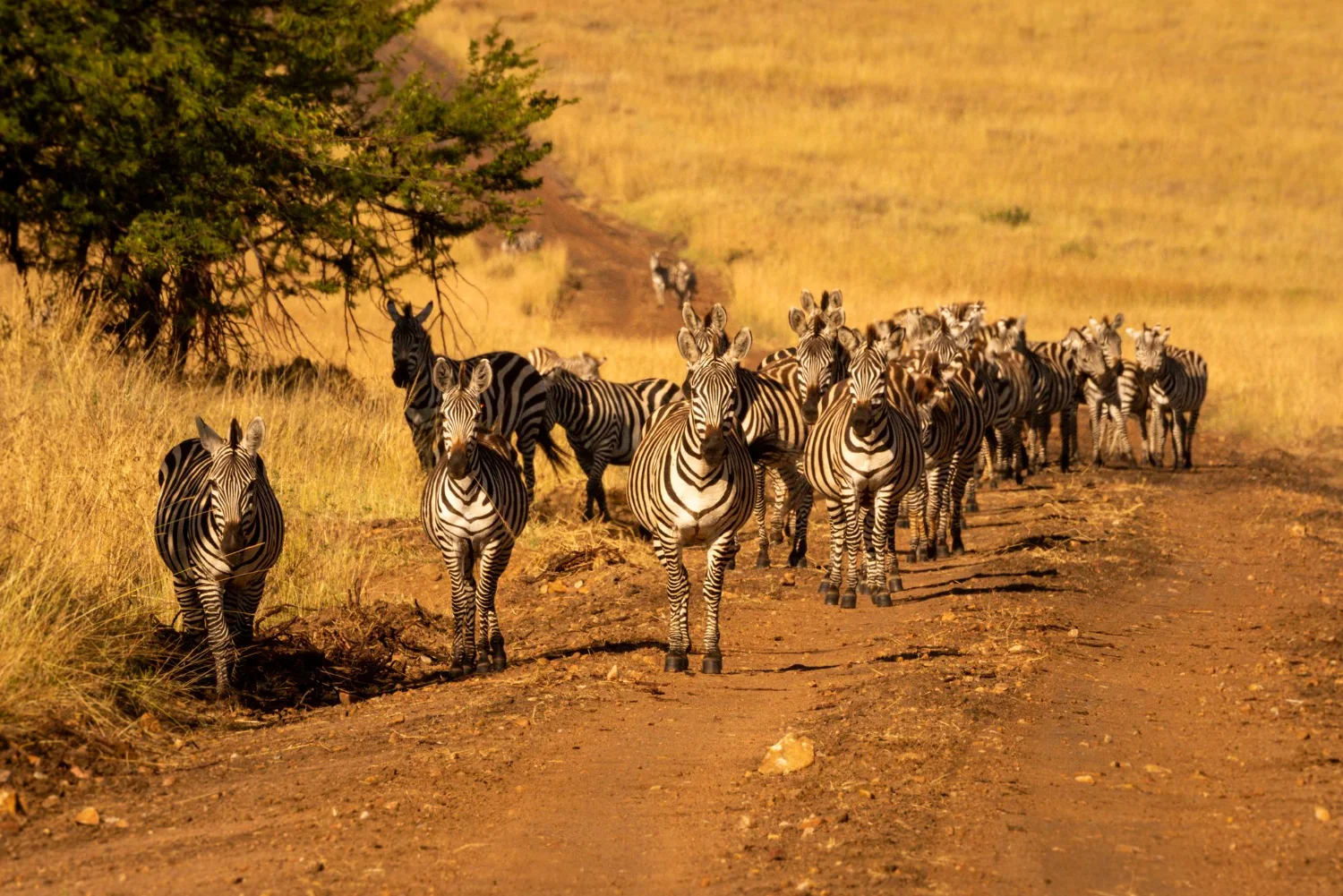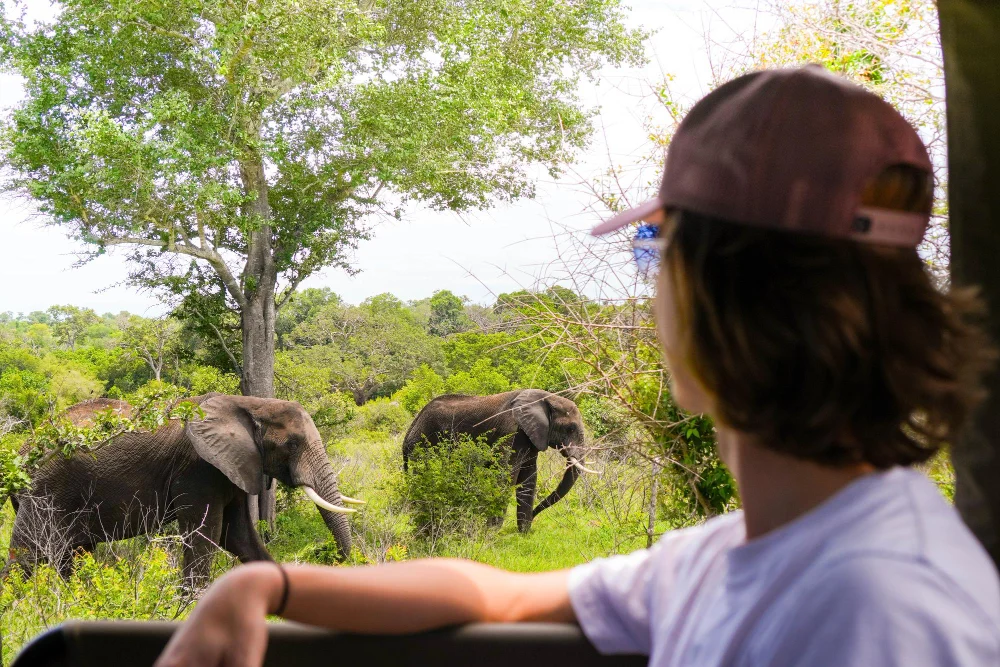The Mountain Gorillas of Bwindi
Bwindi is world-famous for its population of mountain gorillas. It is home to an estimated half of all the mountain gorillas remaining in the wild, making it the premier destination for gorilla trekking. The park is divided into several sectors, and each sector has multiple habituated gorilla families that visitors can track and observe. Seeing these gentle giants in their natural habitat is one of the most profound and moving wildlife encounters on Earth.
Wildlife in Bwindi
While the gorillas are the main attraction, Bwindi is a highly biodiverse park. It is home to around 120 species of mammals, making it one of the richest ecosystems in Africa. Other primates you might see include chimpanzees, L’Hoest’s monkeys, and black-and-white colobus monkeys. The park also supports a population of forest elephants and several species of duikers. Bwindi is also a paradise for bird watchers, with over 350 bird species, including many Albertine Rift endemics.
Things to Do in Bwindi
- Gorilla Trekking: This is the primary activity. Join a small group with expert guides to track a habituated gorilla family through the dense forest for a once-in-a-lifetime encounter.
- Gorilla Habituation Experience: Spend a much longer period, up to four hours, with a gorilla family that is still in the process of being habituated to human presence.
- Nature Walks and Hikes: Explore the different forest trails to discover waterfalls, primates, and the park’s incredible birdlife.
- Batwa Cultural Experience: Visit with the local Batwa people, who were the original inhabitants of the forest, to learn about their history, culture, and ancient forest traditions.
- Bird Watching: Seek out some of the rare and endemic bird species that live in the park’s impenetrable forest.
Best Time to Visit Bwindi
| Month | Climate | Gorilla Trekking |
| January – February & June – September | These are the dry seasons. There is less rainfall, and the weather is generally sunny. | This is the best and most popular time. The forest trails are drier and less slippery, making the trek easier. |
| March – May & October – November | These are the wet seasons. There are heavier and more frequent rains. | Trekking can be more challenging due to muddy and slippery trails. However, there are fewer tourists, and permits may be more readily available. |
Guide Tip
Gorilla trekking permits are extremely limited and must be booked far in advance, often a year or more, especially for the peak dry seasons. Plan and book your trip as early as possible to secure your spot for this incredible experience.






